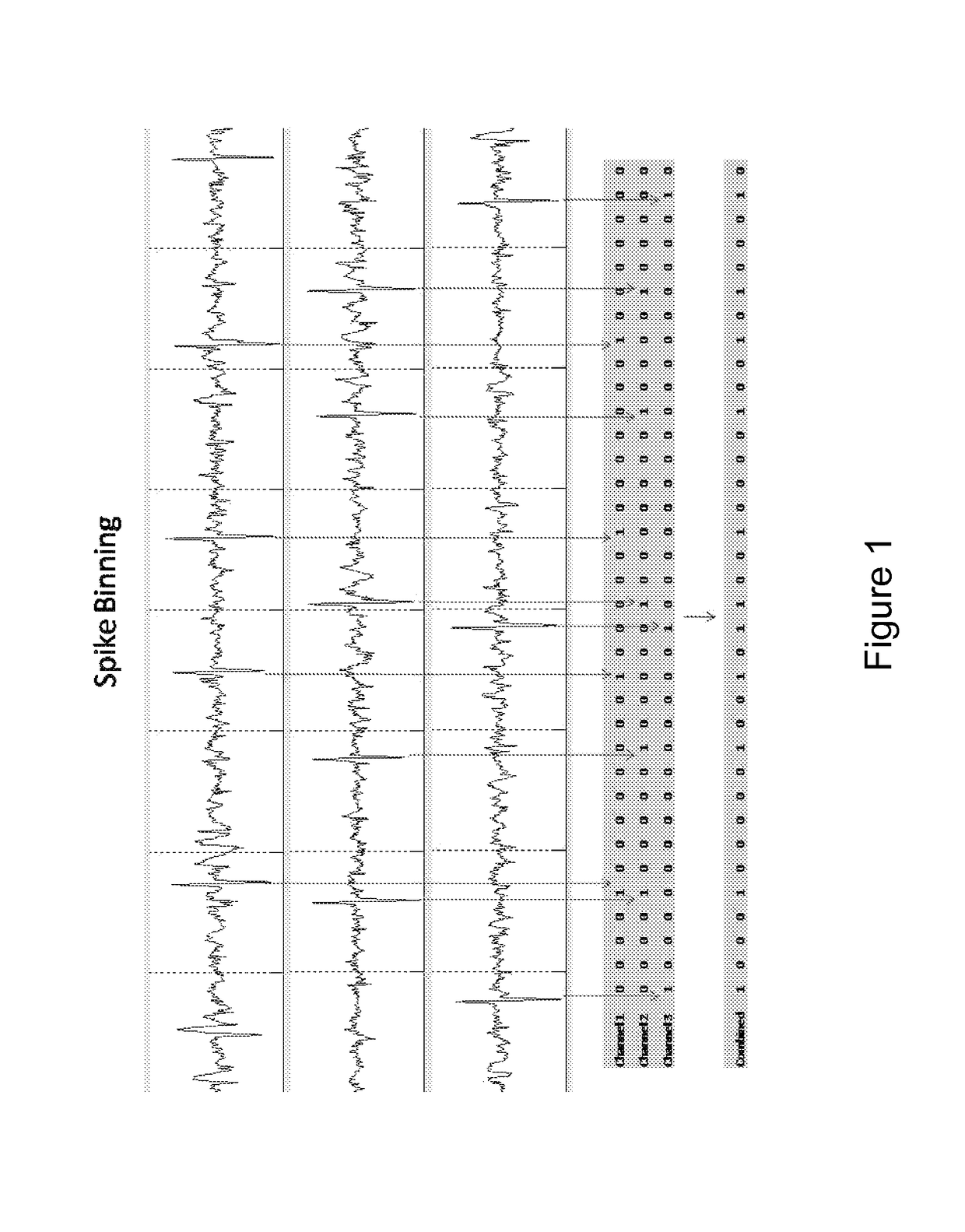System and method of detecting and predicting seizures
a system and prediction technology, applied in the field of system and prediction of seizures, can solve the problems of most problematic and frustrating, adverse side effects of aeds, and drugs that are not recommended for women of child bearing age, and achieve the effects of increasing coherence, increasing coherence, and increasing the firing rate of excitatory neurons
- Summary
- Abstract
- Description
- Claims
- Application Information
AI Technical Summary
Benefits of technology
Problems solved by technology
Method used
Image
Examples
experimental examples
[0117]The invention is further described in detail by reference to the following experimental examples. These examples are provided for purposes of illustration only, and are not intended to be limiting unless otherwise specified. Thus, the invention should in no way be construed as being limited to the following examples, but rather, should be construed to encompass any and all variations which become evident as a result of the teaching provided herein.
example 1
Prediction and Detection of Seizure Activity
[0118]The materials and methods are now described.
[0119]The Kainic Acid (“KA”) lesion model is well established (Cavalheiro et al., 1982, Electroencephalography and Clin. Neurophysiol. 53:581-589; French et al., 1982, Neurosci. 7:2525-2536; Ben-Ari, 1985, Neurosci. 14:375-403; Mathern et al., 1993, Electroencephalography and Clin. Neurophysiol. 87:326-339; Babb et al., 1995, Italian J. of Neurolog. Sci. 16:39-44; Bragin et al., 1999, Epilepsia 40:1210-1221; Bragin et al., 2005, Epilepsia 46:1592-1598). Rats (N=10, Sprague Dawley, 200-300 g) are anesthetized with Nembutal (50 mg / kg i.p.) and placed in a stereotaxic apparatus for surgery (Cartesian Research, Sandy, Oreg.). The depth of anesthesia is controlled by the pinch reflex throughout the surgery and supplemental injections of 0.05 ml Nembutal is given as necessary. Sterile procedures are used and all NIH Animal Care and Use guidelines are followed. The skin i...
example 2
Spike Field Coherence Estimation
[0157]The coherence between oscillatory activity in local field potentials (LFP) and single neuron action potentials, or spikes, has been suggested as a neural substrate for the representation of information. The power spectrum of a spike triggered average (STA) is commonly used to estimate spike field coherence (SFC). However, when a finite number of spikes are used to construct the STA, the coherence estimator is biased. Introduced herein is a correction for the bias imposed by the limited number of spikes available in experimental conditions. In addition, an alternative method for estimating SFC from an STA by using a filter bank approach is presented. This method is shown to be more appropriate in some analyses, such as comparing coherence across frequency bands. The proposed bias correction is a linear transformation derived from an idealized model of spike-field interaction but is shown to hold in more realistic settings. Uncorrected and correct...
PUM
 Login to View More
Login to View More Abstract
Description
Claims
Application Information
 Login to View More
Login to View More - R&D
- Intellectual Property
- Life Sciences
- Materials
- Tech Scout
- Unparalleled Data Quality
- Higher Quality Content
- 60% Fewer Hallucinations
Browse by: Latest US Patents, China's latest patents, Technical Efficacy Thesaurus, Application Domain, Technology Topic, Popular Technical Reports.
© 2025 PatSnap. All rights reserved.Legal|Privacy policy|Modern Slavery Act Transparency Statement|Sitemap|About US| Contact US: help@patsnap.com



